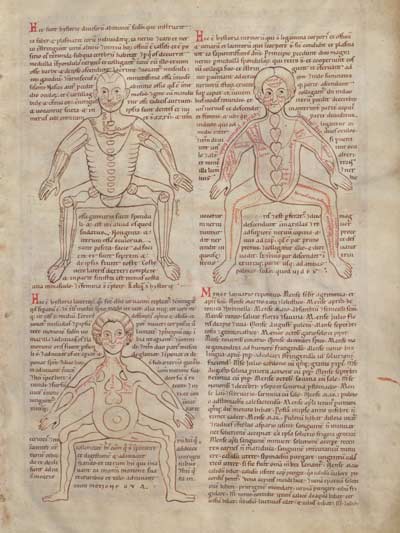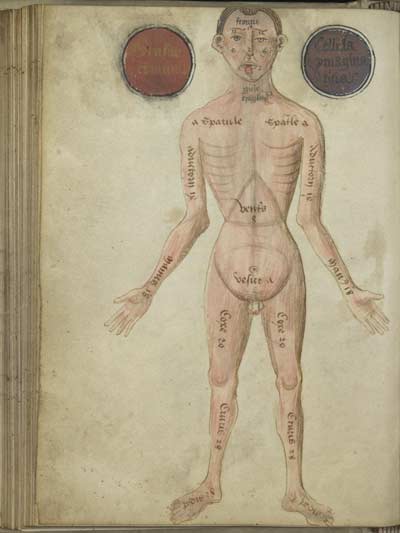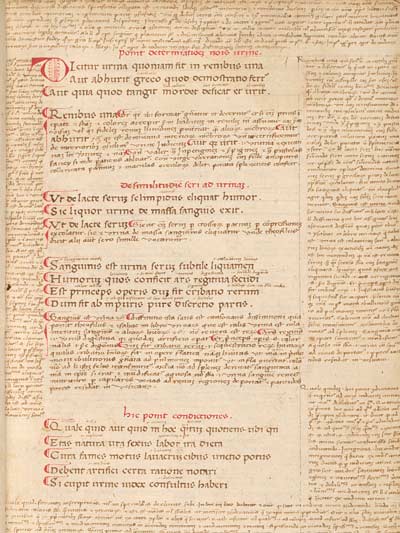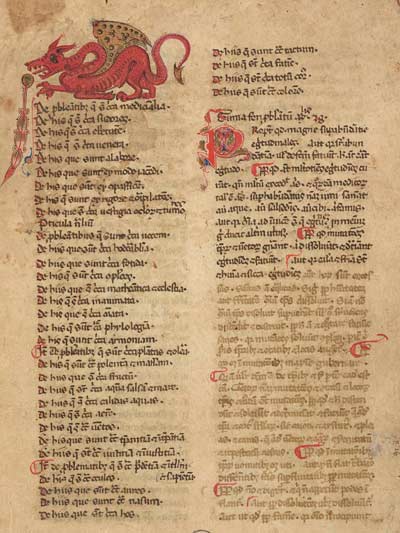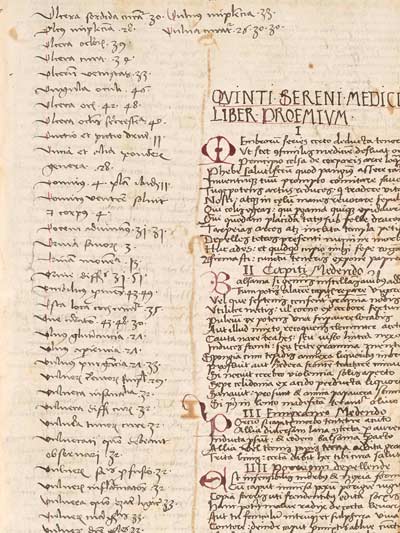Knowledge of the human body could only be achieved by the practice of human dissection. The regular performance of human dissection only began, however, at the end of the thirteenth century, probably as a result of close reading of what was then known of the extant anatomical teachings of Galen. At the universities of Bologna and Montpellier, and later elsewhere in Europe, human dissection began as legal autopsy, and then it was used for anatomical and surgical teaching. Manuals were eventually produced to accompany these teaching exercises, like Mondino’s Anatomia, written in 1316 for students at the University of Bologna. These anatomical manuals also contained diagrams and illustrations derived from a long tradition of depicting the human body in a schematic manner to aid memorization. This schematic approach can be seen in the drawings known as the “five figure series,” which displayed the arteries, veins, muscles, nerves, and bones. Various versions of them can be found in numerous Islamic and Western manuscripts, and only at the beginning of the fifteenth century do we start to see more realistic representation of human anatomy.


